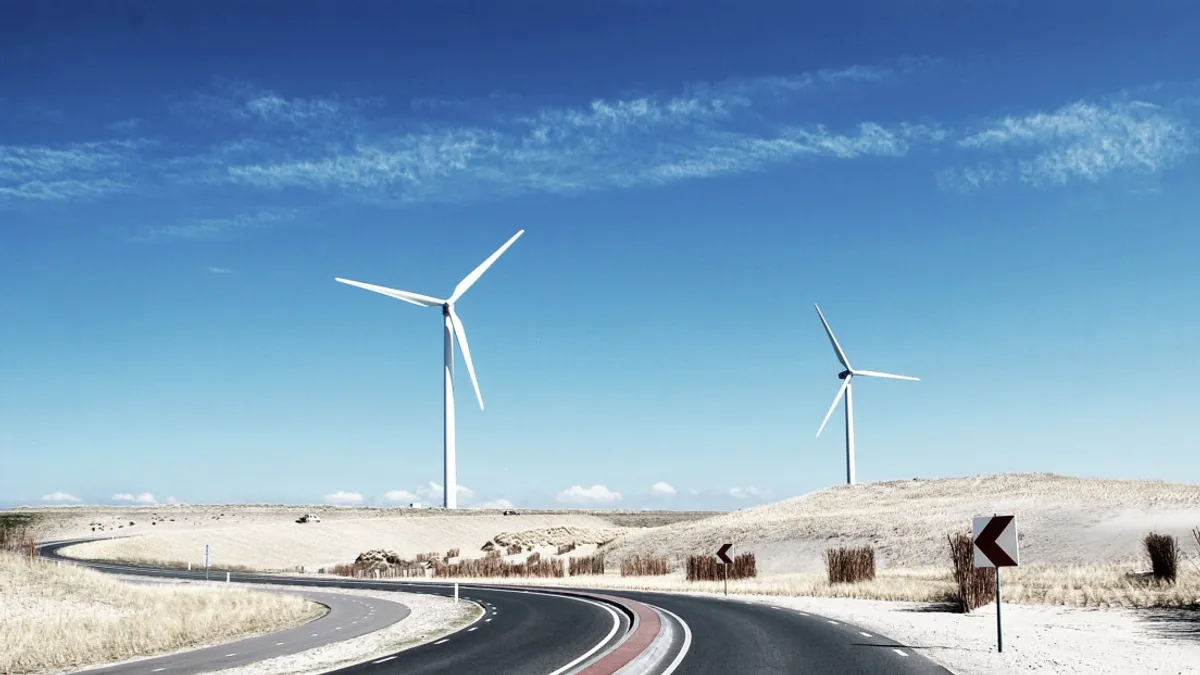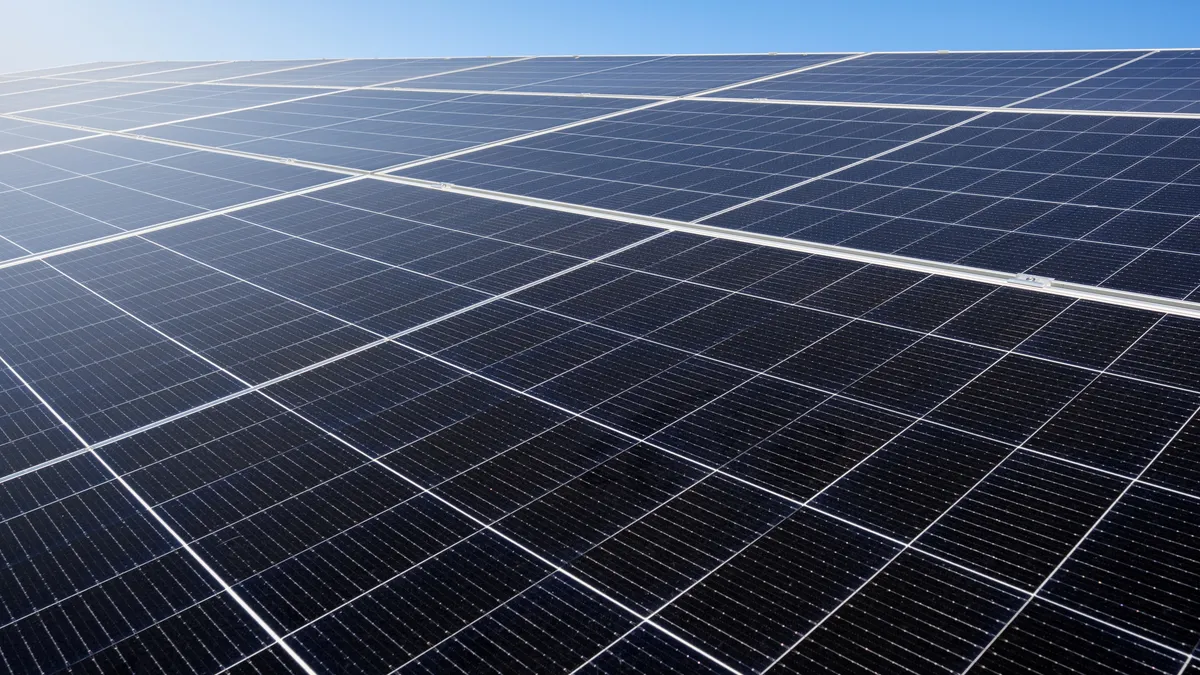The following is a contributed article by Jurgen Weiss, Principal at The Brattle Group.
Reducing GHG emissions 80% by 2050 relative to 1990 levels — often referred to as an "80 by 50" goal — is quickly becoming the consensus decarbonization target, and more and more states and utilities are committing to a goal of this kind. Increasingly, many stakeholders are calling for the pursuit of even more ambitious goals, such as striving for 100% renewable energy or net-zero emissions by 2050. However, just as many voices suggest that a 100% clean energy goal is unnecessary, infeasible or too expensive.
All three of these arguments — that a 100% goal is unnecessary, infeasible and too expensive — are questionable and quite likely incorrect.
A 100% carbon-free energy supply for electricity, buildings, transportation and portions of the industrial sector likely is necessary to support an 80% economy-wide decarbonization by 2050, because decarbonizing other sectors, such as agriculture and certain industries, is harder and more expensive. Achieving 80% economy-wide reductions therefore likely requires a carbon-free energy sector so that there is room for residual emissions in other sectors. This is particularly true for the electricity sector, which likely will grow significantly as we electrify significant portions of transport, buildings and industrial energy supply. For this reason, this article focuses on the feasibility and likely cost of a 100% emissions-free electricity sector.
Operating a 100% carbon-free electricity sector by 2050 certainly is feasible. When questioning how a 100% carbon-free electricity system can function, people often confuse the terms "carbon-free" and "dispatchable." Our ability to operate an electricity system with high shares of variable renewable energy resources — in the U.S. primarily wind and solar PV, with smaller amounts of hydro, biomass and geothermal — has dramatically improved over the past couple of decades.
Challenges on road to 100%
It is nevertheless true that, as the share of renewable generation grows towards 100%, new challenges emerge that require significant amounts of dispatchable generation resources — especially those that can provide power for longer periods of time when the wind doesn’t blow and the sun doesn’t shine. Because periods of low wind, solar and hydro generation can last several days, weeks, or go through seasonal or even multi-year cycles, existing battery storage technologies would be prohibitively expensive to address this challenge. But, while still expensive, we already have storage technologies that can address this problem, and new ones are emerging rapidly.
Beyond batteries, there are three promising storage technologies that can help us deal with the challenges of a 100% renewable electricity system: gravity, heat and electrolysis. There are a number of proposed or emerging low-cost storage options using gravity to store vast amounts of energy for long periods of time, including pumped hydro, lifting blocks of concrete on a tower or putting rocks on a train that gets pulled up a hill, or literally cutting a cylinder into granite and lifting it. Heat (or cold) can also be stored daily, seasonally or perhaps even longer. For example, the city of Toronto uses the natural temperature of Lake Ontario to cool buildings in the summer, and geothermal systems can be designed to "pre-heat" the ground in the summer and use the same heat in the winter.
Wind and solar electricity can also be used to make hydrogen from water through electrolysis. The hydrogen can be stored directly or it can be used along with CO2 captured from carbon-neutral processes (such as bio-feed stocks or from the air) to make methane (CH4) and other energy-dense substances such as methanol, ammonia or even a carbon-free substitute for jet fuel. These chemical processes, sometimes called "P2X" (Power to "fill in the blank"), are still expensive today, but for a variety of reasons, significant capital is already flowing into their development and significant cost reductions likely are feasible with further technological development.
The important point is that the process for turning water and electricity into hydrogen, methane and other substances is well understood and functioning today. We can store hydrogen, methane or liquids for long periods of time and convert them back into electricity with fuel cells or gas turbines when we need to — thus creating a carbon-neutral, dispatchable resource to fill in the gaps when we do not have enough solar and wind power to meet electricity demand. In addition to these options, it is also possible that carbon capture and sequestration will become more cost-effective for removing the carbon from easily storable fossil fuels that can be used to power dispatchable generation when needed.
Not too expensive
Finally, a 100% carbon-free energy system is unlikely to be too expensive. Even though storage and carbon-free dispatchable resources are currently expensive when compared to, say, storing and using natural gas in the United States, there is no obvious way of telling whether a 100% renewable energy system using emerging technologies to balance the electric system will lead to substantially higher energy costs for consumers.
Meeting the large portion of demand that can be met directly with wind, solar, batteries, demand response and other existing technologies before running into long-term storage and dispatchability issues is getting cheaper all the time. Even only five years ago, few industry participants anticipated the low cost of solar and storage devices already achieved today. In many parts of the country, un-subsidized new renewable resources are already cheaper than new fossil-fueled plants and, in the near future, some of them will be cheaper than operating existing fossil plants.
Even with the additional cost of new transmission infrastructure needed to connect all these renewable energy resources, the average cost for this portion of a carbon-free electricity sector will likely not be dramatically higher than the average cost of electricity today. Hence, even if the dispatchable portion of a future 100% carbon-free grid were quite a bit more expensive, there is a good chance that resulting average customer rates remain at or below historic values.
As an aside, comparing the projected costs of carbon-neutral new approaches to dealing with the "last 20-30%" of getting to 100% to the current fossil-fuel-based solutions (such as natural gas-fired power generation) likely overstates the cost of these new approaches. Since operating a fossil-fuels based infrastructure involves a significant amount of fixed costs, the costs per kWh of fossil-based energy would increase if the overall volume of fossil-based energy production declines, as it most likely will.
In this context, today’s relatively low energy costs are quite unusual. According to the U.S. Energy Information Administration, the average share of household disposable income spent on energy has been around 4-5% in recent years, down from 6-8% in the 1970s and 1980s. Hence, the U.S. economy has been through periods with energy costs being 50-100% higher than they are now without any catastrophic impacts and without stunting economic growth.
Electrification shift
Importantly, achieving the stated 80% economy-wide decarbonization goal will almost certainly require shifts towards electric cars and electric heating. The two primary technologies involved, electric motors and heat pumps, already are significantly more efficient than their fossil counterparts. Therefore, shifting to electric transportation and heat pumps could potentially provide significant cost savings to consumers.
The bottom line is that, given all the progress we are likely to make, we likely will be able to reduce the cost of a significant portion of our energy consumption. Consequently, there is no obvious reason to believe that energy will become unaffordable, even if we have to use relatively expensive means to decarbonize perhaps the last 20-30% of our electricity supply by creating carbon-neutral and dispatchable sources of power generation.
Ironically, a lower-cost outcome is more likely if we commit to a 100% rather than just 80% carbon-free electricity sector. Committing to 100% will provide additional certainty for innovations and cost reductions, such that the dispatchable carbon-free solutions will become available in time to decarbonize the last 20-30% of our electricity supply.
I am thus optimistic that (1) we will be able to develop and operate a 100% carbon-free electricity system to achieve 80% economy-wide decarbonization within 30 years, and that (2) the cost to consumers (and businesses) of such a system will not be fundamentally different from costs the U.S. has seen historically or that are experienced in many other developed countries today. In fact, I am virtually certain that such a system will be less expensive than the consequences of climate change if we do not manage an expedited transition to such a system.
We should be much more worried about our ability to ramp up our efforts to get there in time, given the discrepancy between the current pace of change and the much faster pace that almost certainly will be needed over the next decades. Unless we keep our foot on the clean-energy accelerator, we likely won’t achieve anything near even an 80% carbon-free economy and hence the difficult question of how to manage a fully decarbonized electric system won’t have to be answered. And that would be a shame, or much worse.






















